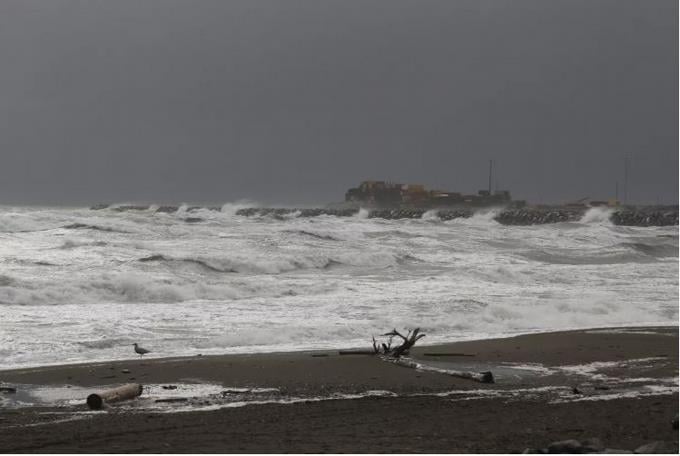In Utqiagvik, Alaska’s northernmost community—formerly known as Barrow_, the thermometer reached 4.4 degrees Celsius (40 °Fahrenheit) Monday morning. The figure not only represents a record 3.3 degrees Celsius (6 °F), but is the hottest temperature ever recorded for the region between late October and late April, according to Rick Thoman, climate specialist at the University of Alaska Arctic Research Center, Fairbanks Campus.
In Nome, Alaska, there was rain over the weekend, which is unusual but not unheard of for December, and the town also set a new record for high temperatures on Sunday. Savoonga Creek was overflowing and not covered in snow, nor was the community of Teller, northwest of Nome, where snow is used for drinking water at this time of year, Thoman said.
On Sunday, the entire Arctic had a average temperature 6.4 °C (11.5 °F) higher than the average between 1979 and 2000, And on Monday computer models showed that average is likely to be 10.5 °F (5.9 °C) higher than normal, according to the University of Maine’s Climate Reanalyzer system.
The weather in Nuuk, Greenland, on Friday was short-sleeved for December, with the high at 54°F (12.2°C), which is 26°F (14.4°C) above normal maximum.
In Kangerlussuaq, Greenland, the thermometer reached 8.9 °C (48 °F) on Friday, which is 18.9 °C (34 °F) warmer than normal.
“The whole Arctic is hot except for small portions in the middle and eastern Canadian Arctic, and a very small portion of Siberia,” Thoman said from Fairbanks.
This is partly due to a storm system, which is possibly just a random event, but also due to lower-than-normal sea ice as a result of human-caused climate change, Thoman said.
Sea ice is in its sixth lowest level on record, according to the National Snow and Ice Data Center. It’s well below normal, “but we’ve seen worse,” Thoman said.
Sea ice is important because in some areas of the Arctic there is no sun during winter and the atmosphere is cold. But if there is open water, it is usually warmer than the atmosphere.
“Pretend it’s a heating pad that just emits heat into the atmosphere,” Thoman explained.
Due to less sea ice, much of the The Arctic is currently warming four times faster than the rest of the planet, resulting in an increase in “winter heat events,” said Danish Meteorological Service scientist Jason Box, who is conducting studies on Greenland.
“Some people say, ‘come on, it’s just the weather,’” Box said. “However, record temperatures of which we have had many examples in recent years tell us the true story of climate warming.”
